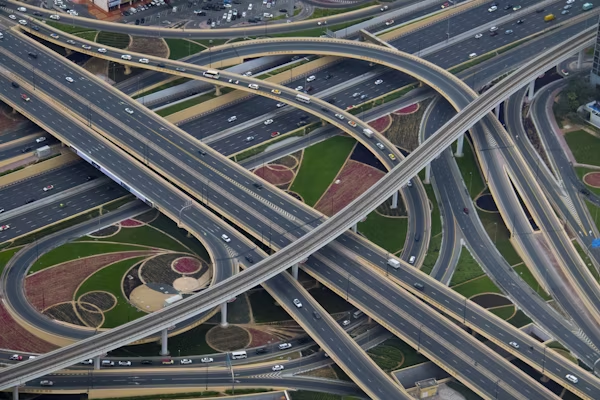In today’s fast-paced world of infrastructure expansion, growing cities, and ambitious industry plans, governments often face the challenge of how to fairly and efficiently assess and approve projects that could have widespread impacts. This is where State Significant Development (SSD) comes in—a vital part of planning systems that ensures major developments are thoroughly assessed while helping drive economic and environmental progress.
Whether you’re a property developer, community advocate, student, or just someone curious about how massive building projects get approved, this article will walk you through what SSD means, why it matters, and how it works in a modern regulatory landscape.
What is State Significant Development?
State Significant Development (SSD) refers to large-scale projects that are considered to be of state-level importance due to their size, complexity, or potential impact. These aren’t your typical neighborhood constructions—think major hospitals, universities, mining operations, or massive residential estates. Because of their potential to affect large communities or critical environments, they are assessed under a special planning process by state governments, not local councils.
These projects must align with state priorities and undergo a detailed approval process to make sure they’re safe, sustainable, and beneficial in the long run.
Why is SSD Important in Urban and Regional Growth?
With cities growing and industries evolving rapidly, states must ensure that large developments are handled responsibly. SSD ensures that the biggest projects don’t skip critical planning steps. These developments often impact thousands of people, influence traffic patterns, affect the environment, and shape the future of towns and regions.
SSD processes offer a balance between allowing innovation and development to flourish while safeguarding public interests, environmental standards, and legal obligations. It’s the middle ground where progress and protection meet.
Types of Projects that Qualify as SSD
Projects considered SSD typically fall under specific categories defined in planning legislation. These include but are not limited to:
Educational institutions like new universities or major campus expansions
Health services including large hospitals or medical research centers
Infrastructure such as airports, ports, and major roads
Energy projects like power stations, wind farms, or solar fields
Residential estates or urban renewal initiatives above a certain scale
Mining or extraction industries with significant economic impact
Each of these projects undergoes a thorough screening to determine if they meet the criteria for SSD.
How is SSD Different from Local Development?
Unlike regular development applications that go through local councils, SSD is assessed at the state level. This means the process involves senior planners and government agencies who consider broader implications. For example, while a local council might focus on how a project affects traffic in one suburb, a state SSD process will look at the bigger picture—how it impacts the whole city or region.
Another key difference is that SSD proposals often require Environmental Impact Statements (EIS). This document outlines potential risks and how the developer plans to manage them. This level of detail ensures better transparency and accountability.
Rapid Assessment and Streamlining for SSD
To make approvals faster without sacrificing quality, many governments have introduced rapid assessment frameworks. These systems are designed to streamline decision-making for SSD and State Significant Infrastructure (SSI), using modern tools and coordinated approaches between agencies.
Rather than waiting months or years, well-prepared SSD applications can now be processed in shorter timeframes—provided they meet all requirements. This reduces delays, keeps investment flowing, and supports job creation while still meeting planning objectives.
Community Involvement in SSD Assessments
Despite the scale of these developments, public input remains a crucial part of the SSD process. When a proposal is lodged, community members are often invited to comment during a public exhibition phase. Their feedback is considered in the final decision, offering transparency and allowing residents to voice concerns or support.
This community engagement helps balance developer ambition with community values and expectations.
Environmental and Social Considerations in SSD
Environmental protection is at the heart of the SSD process. All SSD projects must address how they will manage issues like pollution, water usage, biodiversity, and carbon emissions. In many cases, these projects include sustainability plans and eco-friendly designs.
On the social side, developers must also consider housing needs, cultural heritage, and access to essential services. If a project impacts Indigenous land, historical sites, or public open spaces, these factors must be evaluated and mitigated.
Approval Stages of an SSD Proposal
The journey of an SSD proposal typically follows several stages:
Lodgment and initial review
The developer submits detailed documents, including the scope of work and an environmental impact statement.
Public exhibition
The proposal is published online, inviting public submissions over a set period.
Government agency input
Various state departments (such as transport, environment, and heritage) provide advice and recommendations.
Assessment and recommendation
A team of planning experts evaluates the feedback and impacts, then drafts a report for decision-makers.
Determination
The final decision is made by the state planning authority or Minister for Planning.
How Technology Supports the SSD Process
Digital planning tools have made it easier to visualize, track, and assess SSD proposals. Interactive maps, 3D modeling, and AI-driven analysis allow authorities to quickly spot risks or identify benefits. These innovations have sped up approval times, made community engagement more accessible, and improved project outcomes.
Online dashboards also let the public follow project timelines and read updates, creating greater transparency.
Challenges and Criticisms of SSD
While SSD is essential for modern development, it’s not without controversy. Some critics argue that state-level decisions may sometimes overlook local nuances. Others worry about environmental impacts or the influence of large corporations on the planning process.
To address these concerns, governments are working to improve consultation, strengthen environmental safeguards, and enforce stricter compliance for approved projects.
The Future of SSD in a Changing World
As we head into a future defined by climate change, smart cities, and growing populations, SSD will play a bigger role than ever. Governments are expected to refine and expand their SSD frameworks to focus more on climate resilience, affordable housing, and sustainable technology.
Emerging areas like green infrastructure, offshore wind projects, and hydrogen energy developments may soon become the new face of SSD.
Conclusion
State Significant Development is more than just a planning category—it’s a bridge between vision and reality. It allows governments and communities to shape the future while ensuring that big ideas are properly vetted, publicly accountable, and environmentally sound. By understanding how SSD works, we can all better participate in decisions that shape our neighborhoods, our cities, and our future.
As technology improves and societies evolve, SSD will continue to be a vital part of how we manage responsible development. Whether you’re a developer looking to build something remarkable or a citizen wanting to protect your community’s best interests, SSD is the framework where both goals can meet.
FAQs
What qualifies a project as State Significant Development?
A project qualifies if it meets certain thresholds for size, economic impact, or environmental sensitivity as defined by state planning regulations.
Who approves State Significant Development applications?
SSD projects are assessed and approved by state-level authorities, often involving the Minister for Planning or equivalent planning body.
How long does the SSD approval process take?
Timeframes vary, but streamlined systems aim to deliver decisions in a few months if the application is well-prepared.
Is public feedback considered in SSD projects?
Yes, community submissions during the public exhibition phase are reviewed and considered before a decision is made.
What is the difference between SSD and SSI?
SSD involves large developments like hospitals or universities, while SSI refers to major infrastructure such as highways or pipelines.
Can SSD projects be rejected?
Yes, if a proposal doesn’t meet planning or environmental standards, or if significant community or agency concerns arise, it can be refused.


